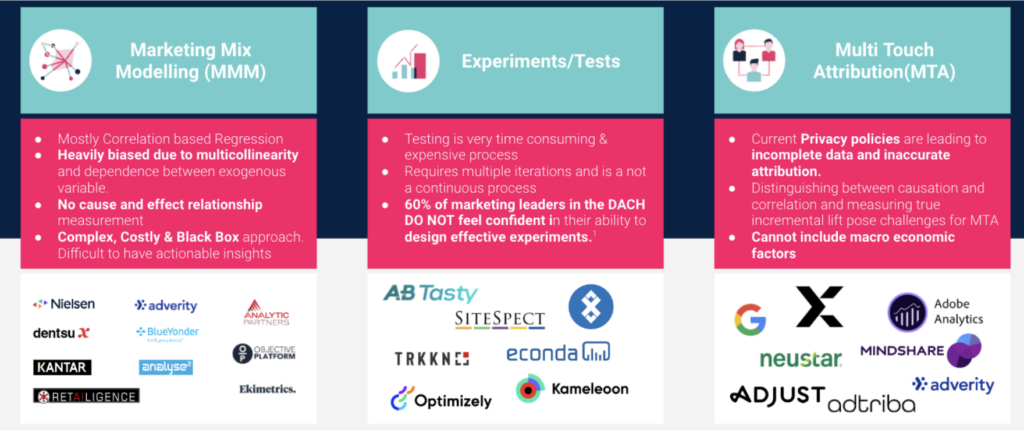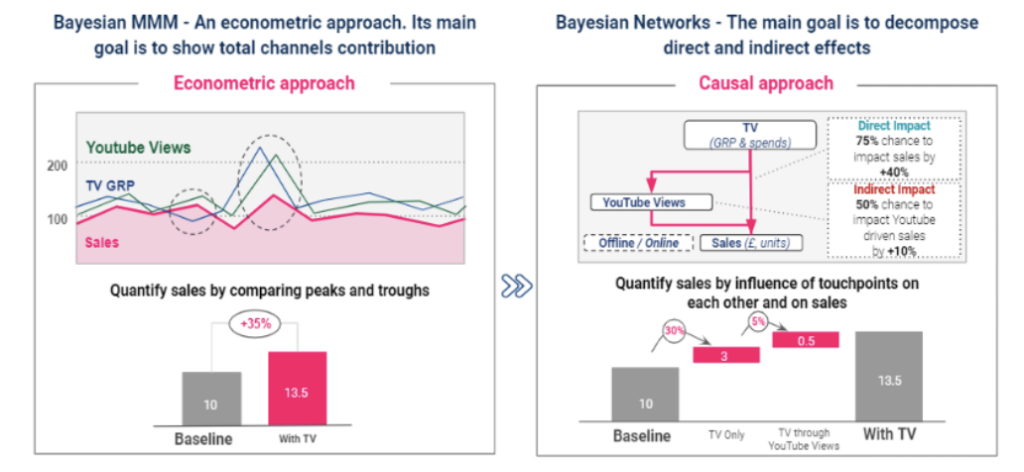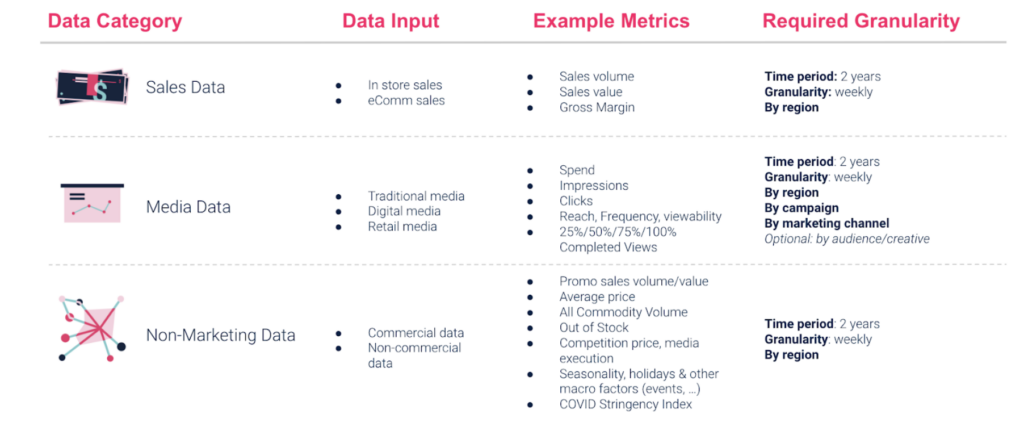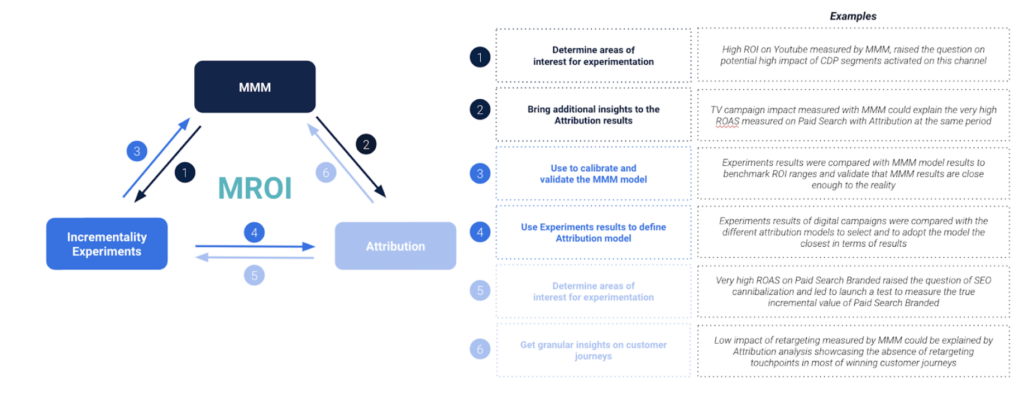Measuring and optimizing marketing ROI is a challenge for many companies, with 70% of marketing executives struggling to do so effectively.
“Organizations that focus on measurement as a strategic priority see a 10 to 20% increase in marketing ROI.”
Measuring Marketing ROI is a key challenge in today’s companies
For many companies, holistic measurement remains a challenging puzzle piece that doesn’t quite fit into their overall strategy. In fact, 70% of marketing executives still struggle to accurately measure and optimize the return on investment (ROI) of their marketing campaigns. But why is this the case? Why has measurement become increasingly complex, and what is the best approach to tackle these challenges?
Here are three key trends shaping the current marketing measurement landscape:
Beyond these trends, a new topic is emerging in the realm of marketing measurement: the environmental impact of advertising. Every data transfer between an ad server and the end-user involves millions of signals exchanged between various technologies. Activities like targeting, real-time bidding, and tracking verification all consume electricity, leading to the production of greenhouse gasses. By quantifying the electricity used at each stage of ad delivery and considering the carbon intensity of energy production, we can estimate the emissions generated by an ad. However, carbon measurement often comes with additional costs and, in challenging economic times, is seen as a luxury rather than a standard requirement.
Additionally, there is frequently a significant gap between the current state and key strategic goals. Marketers must navigate the complexities of bridging this gap while managing a plethora of marketing technologies. This navigation is critical to aligning marketing efforts with overall business objectives and achieving sustainable success.
Holistic Measurement: Key Challenges Remain for Marketers
1) Lack of Confidence
One key challenge is a lack of confidence in areas such as media planning, budget approvals, and justifications (Mank et al. (2019).) An internal satisfaction survey of marketing managers across industries in the DACH region found that nearly 25% are dissatisfied with their current ROI measurement capabilities, and only 30% consider their current capabilities satisfactory and on the right track.
There are several reasons for this:
2) Lack of Technological Understanding
Another significant challenge is the lack of technological understanding. Existing measurement methods have evolved, leaving marketers unsure how to utilize them effectively. An international media buyer at a travel agency in Germany highlighted this issue, saying, “We are aware of the measurement problem, but we don’t know how to solve it.”
There is still heavy reliance on preliminary and inaccurate rule-based attribution, as well as expensive and time-consuming A/B testing for measuring marketing effectiveness. 60% of marketing leaders in the DACH region lack confidence in their ability to design effective experiments. Artefact DACH’s research shows that a tiny fraction of marketers are using a unified approach combining MMM, attribution and incrementality testing. 70% say they’re using rule-based attribution only to understand measurement, which is a very problematic indicator.
Figure 1: Potential set of service providers of MMM, A/B Testing and Multi-Touch-Attribution

3) Conflicting Focuses Within Companies
There is often a conflict between Chief Marketing Officers (CMOs) and Chief Financial Officers (CFOs) due to differing priorities in KPIs. While CFOs focus primarily on marketing expenditures, CMOs emphasize brand building and Customer Lifetime Value (CLV) rather than short-term sales. This discrepancy leads to challenges in balancing short-term sales stimulation with long-term brand development.
Figure 2: Conflicting strategic focus within company

4) Identification of Truly Relevant Marketing Measures
It is commonly known that 50% of marketing spend is wasteful and identifying which half remains a critical issue. It underscores the importance of establishing a robust learning agenda to test the incremental impact of various marketing strategies. Companies need to understand which MMM model is best fit for them.
Three Steps to Gain Competitive Advantage and Maximize ROI
To gain the insights they need to stay ahead of the competition and grow their ROI, companies should integrate three key approaches: Marketing Mix Modeling (MMM), Incrementality Testing, and Attribution. These methods are complementary and should not be seen as mutually exclusive.
Figure 3: Approaches on Bayesian Measurements

Step 1: Clearly Define Your KPI Framework and Test & Learn Agenda
Artefact has extensive experience in helping our clients define their KPI frameworks and Test & Learn agendas. We leverage a comprehensive library of business questions and use cases across various departments and marketing channels, ensuring thorough measurement coverage. This approach enables a detailed 360-degree performance analysis at the most granular level.

Step 2: Collect All Relevant Data in a privacy-safe manner and enrich it with second-party data
The “garbage in, garbage out” saying holds particularly true here: without high-quality data, even the most sophisticated models can yield misleading results. Companies must always focus on collecting accurate and comprehensive data, covering sell-out figures, media metrics, and even non-marketing data.
Moreover, enriching your data with second-party data – information shared by trusted partners – can provide valuable additional insights. They can help fill in gaps, provide context, and enhance the overall quality of your analysis. However, it’s crucial to do this in a privacy-safe manner, ensuring that all data usage complies with relevant regulations and respects user privacy.
An illustration of different data inputs. May vary by industry.
Figure 4: Data inputs for MROI

Step 3: Combine the Three Methodologies for a Holistic View of Marketing Measurement and Effectiveness
Figure 5: Holistic andeffective marketing measurement strategy

By integrating these approaches, companies can achieve a more holistic and effective marketing measurement strategy, leading to better-informed decisions and optimized marketing efforts.

 BLOG
BLOG







